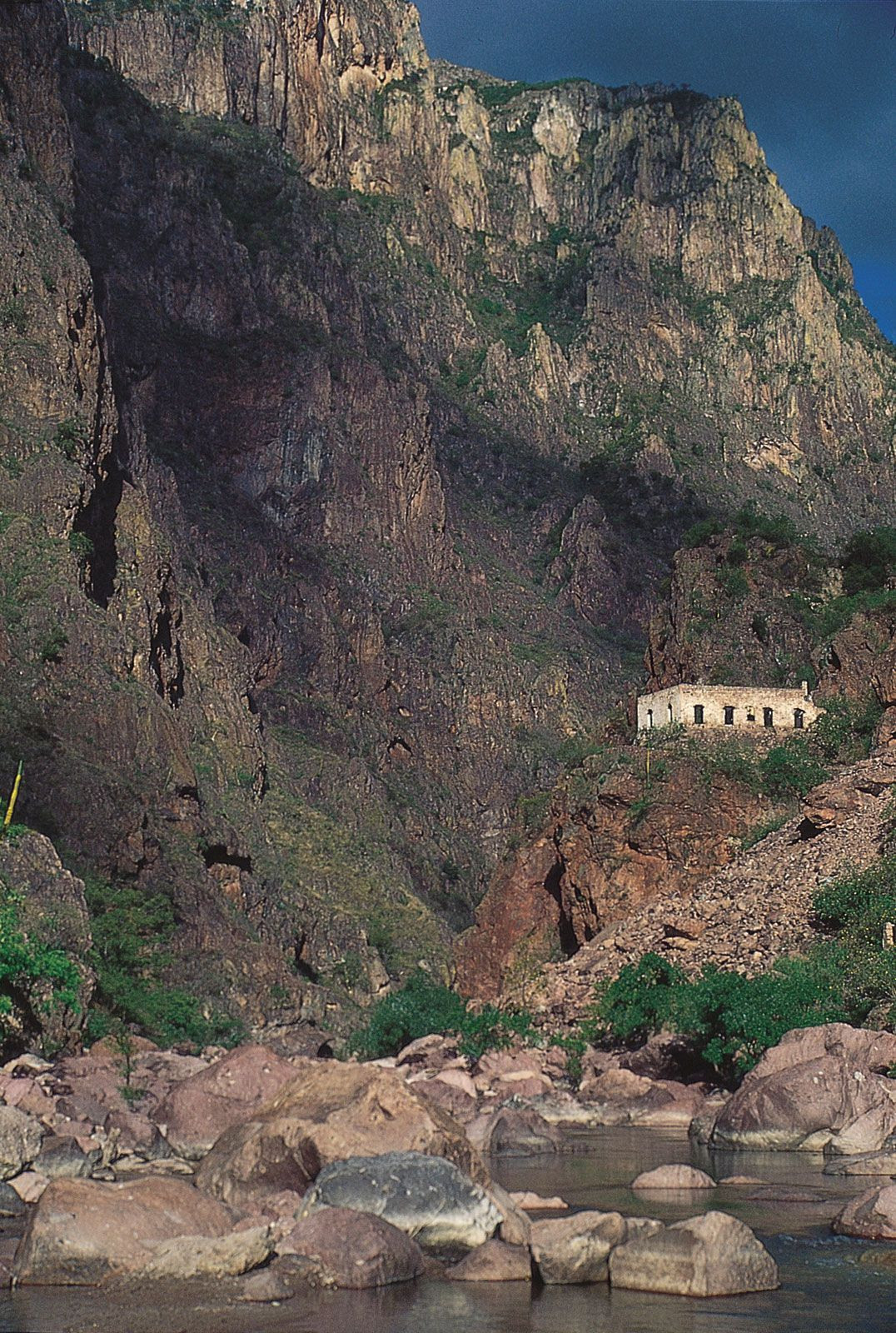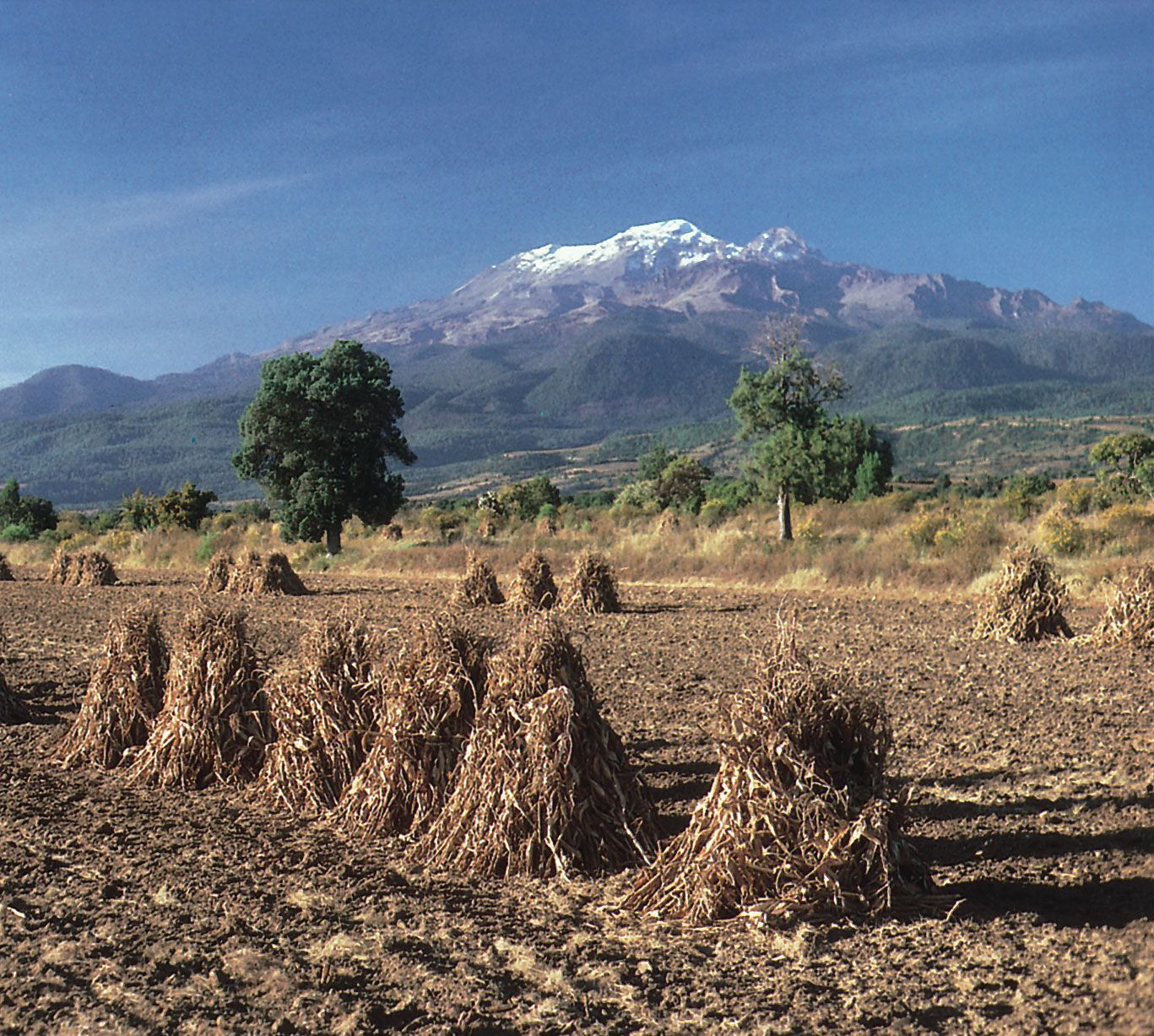Are you curious about where the vibrant and culturally rich country of Mexico is located? Mexico, a popular destination for LGBTQ+ travelers, rests in the southern portion of North America, bordered by the United States to the north and Belize and Guatemala to the southeast, providing a diverse landscape for exploration. Discover more about Mexico’s location, geography, and cultural hotspots on gaymexico.net. Uncover resources and support for LGBTQ+ individuals in Mexico, including information on LGBTQ-friendly travel destinations, legal rights, and community organizations.
1. What are the Major Physiographic Regions of Mexico?
Mexico boasts nine major physiographic regions, each with distinct characteristics: Baja California, Pacific Coastal Lowlands, Mexican Plateau, Sierra Madre Oriental, Sierra Madre Occidental, Cordillera Neo-Volcánica, Gulf Coastal Plain, Southern Highlands, and the Yucatán Peninsula. These regions contribute to Mexico’s diverse landscapes, ranging from deserts to mountains and coastal plains.
- Baja California: An isolated, arid peninsula between the Pacific Ocean and the Gulf of California.
- Pacific Coastal Lowlands: A series of coastal terraces, mesas, and basins along the Gulf of California.
- Mexican Plateau: The largest and most densely populated region, flanked by the Sierra Madre ranges.
- Sierra Madre Oriental: Folded mountains on the eastern side of the Mexican Plateau.
- Sierra Madre Occidental: Volcanic mountains forming the western border of the Mexican Plateau.
- Cordillera Neo-Volcánica: A geologically active mountain range linking the Sierra Madre ranges.
- Gulf Coastal Plain: A wide plain along the Gulf of Mexico, characterized by lagoons and swampy areas.
- Southern Highlands: Dissected mountain ranges and plateaus, including the Sierra Madre del Sur.
- Yucatán Peninsula: A flat, limestone terrain separating the Gulf of Mexico and the Caribbean Sea.
2. Where is Baja California Located?
Baja California is located in northwestern Mexico, an isolated strip of arid land nestled between the Pacific Ocean and the Gulf of California (Sea of Cortez). This peninsula is divided into the states of Baja California and Baja California Sur, stretching approximately 800 miles (1,300 km) long but rarely exceeding 100 miles (160 km) wide. Baja California’s unique geography and climate make it a distinctive region within Mexico, offering diverse landscapes and attractions.
3. What Defines the Pacific Coastal Lowlands and Where Are They Situated?
The Pacific Coastal Lowlands extend from near Mexicali and the Colorado River delta in the north to Tepic in the south, a distance of about 900 miles (1,450 km). These lowlands face the Gulf of California, traversing the states of Sonora, Sinaloa, and Nayarit, bounded to the east by the Sierra Madre Occidental.
4. What is the Mexican Plateau and Where is it Located?
The Mexican Plateau is the largest and most densely populated region in Mexico, situated inland and flanked by the Sierra Madre Occidental and Sierra Madre Oriental mountain ranges. It comprises the vast Mesa del Norte (Northern Plateau) and the smaller, heavily populated Mesa Central (Mesa de Anáhuac). The Mesa del Norte stretches from the U.S. border through the states of Chihuahua, Coahuila, Durango, Zacatecas, Jalisco, and Aguascalientes, ending near San Luis Potosí city. South of there, the Mesa Central extends to just south of Mexico City.
5. Where Can You Find the Sierra Madre Occidental?
The Sierra Madre Occidental forms the western border of the Mexican Plateau, extending roughly 700 miles (1,100 km) from north to south. This volcanic mountain range has an average elevation of 8,000–9,000 feet (2,400–2,700 meters).
 Copper Canyon, Chihuahua state, Mexico
Copper Canyon, Chihuahua state, Mexico
The copper canyon in the Sierra Madre Occidental, showcasing one of Mexico’s most scenic regions.
6. Where Does the Sierra Madre Oriental Lie?
The Sierra Madre Oriental is located on the eastern side of the Mexican Plateau, stretching roughly 700 miles (1,100 km) from north to south before merging with the Cordillera Neo-Volcánica. This range of folded mountains is often considered an extension of the Rocky Mountains.
7. What is the Cordillera Neo-Volcánica and Where is it Situated?
The Cordillera Neo-Volcánica, also known as the Neo-Volcanic Axis or Trans-Volcanic Axis, is a geologically active mountain range that links the Sierra Madre Occidental with the Sierra Madre Oriental at the southern edge of the Mesa Central. It crosses Mexico from Cape Corrientes on the west coast to Xalapa and Veracruz on the eastern coast, forming a mountainous backdrop to the states of Jalisco, Michoacán, Guerrero, México, Morelos, and Puebla, as well as the Federal District.
8. Where Does the Gulf Coastal Plain Extend?
The Gulf Coastal Plain extends approximately 900 miles (1,450 km) along the Gulf of Mexico, from Tamaulipas state (on the Texas border) through Veracruz and Tabasco states to the Yucatán Peninsula. This plain includes the Tabasco Plain in its southeastern section.
9. What are the Southern Highlands and Where Can They Be Found?
The Southern Highlands are a series of highly dissected mountain ranges and plateaus, including the Sierra Madre del Sur, Mesa del Sur, and the Chiapas Highlands (also called the Sierra Madre de Chiapas). They extend approximately from Puerto Vallarta to the Gulf of Tehuantepec.
Acapulco, nestled in the Southern Highlands, is a popular coastal resort with beautiful views.
10. Where is the Yucatán Peninsula Located?
The Yucatán Peninsula lies to the northeast of the Tabasco Plain, extending northward and forming a divider between the Gulf of Mexico and the Caribbean Sea. Its terrain is characterized by limestone, caverns, and sinkholes (cenotes).
11. What Makes Mexico an Appealing Destination for LGBTQ+ Travelers?
Mexico is increasingly recognized as an appealing destination for LGBTQ+ travelers due to its growing acceptance, vibrant gay scene, and diverse cultural experiences. Cities like Puerto Vallarta, Mexico City, and Cancun offer welcoming environments with gay-friendly establishments, events, and communities. While societal attitudes vary, these urban centers provide a sense of safety and belonging for LGBTQ+ individuals. Mexico’s rich history, stunning landscapes, and delicious cuisine further enhance its appeal, making it a popular choice for LGBTQ+ tourists seeking a memorable and inclusive travel experience. For more information on LGBTQ+ travel in Mexico, visit gaymexico.net.
12. What are the Key Considerations for LGBTQ+ Travelers Planning a Trip to Mexico?
When planning a trip to Mexico, LGBTQ+ travelers should consider several key factors to ensure a safe and enjoyable experience. Researching LGBTQ+-friendly destinations and accommodations is essential, as some areas may be more accepting than others. It’s also important to be aware of local laws and customs regarding same-sex relationships and public displays of affection. According to a 2023 report by Human Rights Watch, while significant progress has been made in legal protections for LGBTQ+ individuals in Mexico, societal attitudes can still be conservative in certain regions. Consulting resources like gaymexico.net can provide valuable insights and tips for navigating LGBTQ+ travel in Mexico.
13. Which Cities in Mexico are Known for Being LGBTQ+ Friendly?
Several cities in Mexico are renowned for their LGBTQ+ friendly atmosphere, offering a welcoming and inclusive environment for travelers.
Top LGBTQ+ Friendly Cities in Mexico
| City | Highlights |
|---|---|
| Puerto Vallarta | Known as the “gay beach capital” of Mexico, with a vibrant gay scene, numerous gay bars and clubs, and the annual Vallarta Pride celebration. |
| Mexico City | Offers a thriving LGBTQ+ community, historical landmarks, cultural attractions, and the Zona Rosa district, famous for its gay-friendly establishments. |
| Guadalajara | Features a growing LGBTQ+ scene, traditional Mexican culture, and the Guadalajara International Film Festival, which often showcases LGBTQ+ themed films. |
| Cancun | Popular for its beautiful beaches, resorts, and a developing LGBTQ+ scene with gay-friendly hotels and entertainment options. |
| San Miguel de Allende | Renowned for its colonial architecture, art scene, and a relaxed atmosphere that attracts many LGBTQ+ expats and tourists. |
14. What Legal Protections Exist for LGBTQ+ Individuals in Mexico?
Mexico has made significant strides in legal protections for LGBTQ+ individuals, although there are still areas where progress is needed.
Key Legal Protections for LGBTQ+ Individuals in Mexico
| Legal Right | Status |
|---|---|
| Same-Sex Marriage | Legal nationwide since 2015, following a Supreme Court ruling. |
| Adoption by Same-Sex Couples | Legal in many states, but regulations vary. |
| Anti-Discrimination Laws | Exist at the federal level, prohibiting discrimination based on sexual orientation and gender identity in employment, housing, and services. However, enforcement can be inconsistent. |
| Gender Identity Recognition | Allowed in many states, enabling transgender individuals to change their legal gender. |
| Hate Crime Laws | Some states have laws that include sexual orientation and gender identity as protected categories, providing harsher penalties for crimes motivated by bias. |
15. What Challenges Do LGBTQ+ Individuals Still Face in Mexico?
Despite legal advancements, LGBTQ+ individuals in Mexico still encounter significant challenges. According to a 2024 report by the Comisión Nacional de los Derechos Humanos (National Human Rights Commission), discrimination and hate crimes remain pressing concerns, particularly in more conservative regions. Transgender individuals often face difficulties accessing healthcare and legal recognition. While federal anti-discrimination laws exist, enforcement is inconsistent, leaving many vulnerable to prejudice. Addressing these challenges requires ongoing efforts to promote tolerance, education, and consistent implementation of legal protections to ensure equality and safety for all LGBTQ+ individuals in Mexico.
16. How Can LGBTQ+ Travelers Ensure Their Safety in Mexico?
To ensure their safety in Mexico, LGBTQ+ travelers should take several precautions. Researching LGBTQ+-friendly areas and accommodations is crucial, as attitudes can vary significantly by region. According to a 2022 study by the UCLA Williams Institute, LGBTQ+ acceptance is generally higher in urban areas like Mexico City and Puerto Vallarta. It is advisable to avoid public displays of affection in more conservative areas. Staying informed about local laws and customs, utilizing reputable transportation services, and keeping emergency contacts readily available can also enhance safety. Additionally, connecting with local LGBTQ+ organizations or communities can provide valuable support and insights.
17. What Cultural Experiences Can LGBTQ+ Travelers Enjoy in Mexico?
Mexico offers a wealth of cultural experiences that LGBTQ+ travelers can enjoy, ranging from exploring historical sites to participating in local festivals.
Cultural Activities for LGBTQ+ Travelers in Mexico
| Activity | Description |
|---|---|
| Visiting Ancient Ruins | Explore historical sites like Chichen Itza and Teotihuacan, gaining insights into Mexico’s rich pre-Columbian history. |
| Participating in Local Festivals | Experience vibrant cultural celebrations like Día de los Muertos, which showcases Mexican traditions and artistry. |
| Enjoying Mexican Cuisine | Savor the diverse flavors of Mexican cuisine, from street tacos to gourmet dishes, and participate in cooking classes to learn traditional recipes. |
| Exploring Art and Museums | Visit world-class museums in Mexico City and Guadalajara, showcasing Mexican art from ancient times to contemporary works. |
| Attending LGBTQ+ Events and Pride Parades | Participate in LGBTQ+ pride parades and festivals in cities like Mexico City and Puerto Vallarta, celebrating diversity and community. |
18. What Resources are Available for LGBTQ+ Travelers in Mexico?
LGBTQ+ travelers in Mexico have access to a variety of resources that can help them plan and navigate their trip safely and comfortably. Online platforms like gaymexico.net provide comprehensive guides to LGBTQ+ friendly destinations, accommodations, and events. Local LGBTQ+ organizations, such as Fundación Arcoíris in Guadalajara and Cuenta Conmigo in Mexico City, offer support and information to travelers. Additionally, international LGBTQ+ travel guides and communities, like IGLTA (International LGBTQ+ Travel Association), provide valuable insights and recommendations. Utilizing these resources can help LGBTQ+ travelers make informed decisions and connect with supportive networks in Mexico.
19. How Can LGBTQ+ Travelers Contribute Positively to Local Communities in Mexico?
LGBTQ+ travelers can positively contribute to local communities in Mexico by engaging in responsible and respectful tourism practices. Supporting LGBTQ+-owned businesses and establishments is a great way to directly benefit the community. According to a 2023 report by the Human Rights Campaign, supporting inclusive businesses fosters economic empowerment and visibility. Engaging with local LGBTQ+ organizations and volunteering time or resources can also make a meaningful impact. Additionally, respecting local customs and traditions, learning basic Spanish phrases, and promoting LGBTQ+ awareness through open-minded interactions can contribute to fostering a more inclusive and accepting environment.
20. What are the Emerging Trends in LGBTQ+ Tourism in Mexico?
Emerging trends in LGBTQ+ tourism in Mexico include a growing demand for personalized and authentic travel experiences. According to a 2024 survey by IGLTA, LGBTQ+ travelers are increasingly seeking culturally immersive activities, such as cooking classes, historical tours, and interactions with local communities. There is also a rising interest in eco-friendly and sustainable travel options, with many LGBTQ+ travelers prioritizing destinations and accommodations that prioritize environmental conservation and social responsibility. Additionally, the use of digital platforms and social media to discover and share travel experiences is becoming increasingly popular, enabling LGBTQ+ travelers to connect with each other and access up-to-date information.
21. How Can Gaymexico.net Help LGBTQ+ Travelers Planning a Trip to Mexico?
Gaymexico.net is an invaluable resource for LGBTQ+ travelers planning a trip to Mexico, offering comprehensive and up-to-date information to ensure a safe, enjoyable, and enriching experience. The website features detailed travel guides for various Mexican destinations known for their LGBTQ+ friendliness, including Puerto Vallarta, Mexico City, and Guadalajara, highlighting gay-friendly accommodations, bars, clubs, and cultural attractions. Gaymexico.net also provides essential insights into local laws, customs, and safety tips to help travelers navigate their journey with confidence. Furthermore, the platform offers a community forum where travelers can connect with each other, share experiences, and seek advice. By leveraging gaymexico.net, LGBTQ+ travelers can make informed decisions, discover hidden gems, and foster meaningful connections within the LGBTQ+ community in Mexico.
22. What is the Overall Outlook for LGBTQ+ Rights and Acceptance in Mexico?
The overall outlook for LGBTQ+ rights and acceptance in Mexico is generally positive, with ongoing progress in legal protections and societal attitudes. According to a 2025 research from the UCLA Williams Institute, support for same-sex marriage has steadily increased in recent years, reflecting a gradual shift towards greater inclusivity. While challenges remain, particularly in more conservative regions, advocacy efforts by LGBTQ+ organizations and allies continue to drive positive change. Increased visibility of LGBTQ+ individuals in media and politics is also contributing to greater awareness and understanding. As Mexico continues to embrace diversity and equality, the outlook for LGBTQ+ rights and acceptance remains optimistic.
Address: 3255 Wilshire Blvd, Los Angeles, CA 90010, United States. Phone: +1 (213) 380-2177. Website: gaymexico.net.
 Iztaccíhuatl volcano, Puebla state, Mexico1 of 3
Iztaccíhuatl volcano, Puebla state, Mexico1 of 3
Iztaccíhuatl volcano towering over the fertile fields of Puebla state, symbolizing the natural beauty of the Mesa Central.
FAQ Section
1. Where is Mexico geographically located?
Mexico is located in the southern portion of North America, bordered by the United States to the north, and Belize and Guatemala to the southeast.
2. What are some LGBTQ+-friendly cities in Mexico?
Popular LGBTQ+-friendly cities in Mexico include Puerto Vallarta, Mexico City, Guadalajara, Cancun, and San Miguel de Allende.
3. What legal rights do LGBTQ+ individuals have in Mexico?
LGBTQ+ individuals in Mexico have the right to same-sex marriage nationwide, anti-discrimination laws, and gender identity recognition in many states.
4. How can LGBTQ+ travelers stay safe in Mexico?
LGBTQ+ travelers can stay safe by researching LGBTQ+-friendly areas, avoiding public displays of affection in conservative areas, and staying informed about local laws.
5. What cultural experiences can LGBTQ+ travelers enjoy in Mexico?
LGBTQ+ travelers can enjoy exploring ancient ruins, participating in local festivals, enjoying Mexican cuisine, and attending LGBTQ+ events and pride parades.
6. What resources are available for LGBTQ+ travelers in Mexico?
Resources include online platforms like gaymexico.net, local LGBTQ+ organizations, and international LGBTQ+ travel guides.
7. How can LGBTQ+ travelers contribute positively to local communities in Mexico?
LGBTQ+ travelers can support LGBTQ+-owned businesses, engage with local LGBTQ+ organizations, and respect local customs and traditions.
8. What are the major physiographic regions of Mexico?
Mexico has nine major physiographic regions: Baja California, Pacific Coastal Lowlands, Mexican Plateau, Sierra Madre Oriental, Sierra Madre Occidental, Cordillera Neo-Volcánica, Gulf Coastal Plain, Southern Highlands, and the Yucatán Peninsula.
9. How can Gaymexico.net assist LGBTQ+ travelers?
Gaymexico.net offers comprehensive travel guides, information on LGBTQ+-friendly destinations, insights into local laws, and a community forum for travelers.
10. What is the future outlook for LGBTQ+ rights in Mexico?
The outlook for LGBTQ+ rights in Mexico is positive, with ongoing progress in legal protections and societal acceptance, driven by advocacy efforts and increased visibility.
Ready to explore the vibrant LGBTQ+ scene in Mexico? Visit gaymexico.net for the latest travel guides, event listings, and community connections. Discover your next adventure today and experience the warmth and diversity of Mexico!
 Acapulco, Mexico
Acapulco, Mexico